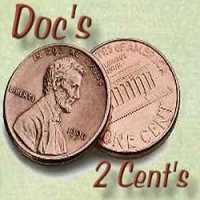America's Democracy - The Indelible America That Has Provided So Much for Its Citizens, Native Indians, those of Foreign Origin, Migrating/Immigrating, even those Illegally since 1607 during the Birth of a New Nation.
America Birth of a New Nation, in the New World its History in brief...
Leif Eriksson Day is an annual observance that occurs on October 9, commemorates the Norse explorer believed to have led the first European expedition to North America.
Nearly 500 years before the birth of Christopher Columbus, a band of European sailors left their homeland behind in search of a new world.
After Christopher Columbus’ historic voyage in 1492, Spain dominated the race to establish colonies in the Americas, while English efforts, such as the “lost colony” of Roanoke, met with failure.
In 1606, King James I granted a charter to a new venture, the Virginia Company, to form a settlement in North America.
1607 The Building of America "Jamestown" the first permanent English settlement in North America on the banks of the James River.
Nov 1620 the arrival of the Mayflower from Plymouth, England
George Washington, born February 22, 1732, Popes Creek, Westmoreland County, Virginia (then the English Colony of Virginia).
19 Apr 1775, the American Revolution was an ideological and political revolution that occurred in British America between 1765 and 1791.
Colonists in British America, Slaves, Native Americans, supported by France, Spain & the Netherlands.
The Thirteen Colonies, also known as the Thirteen British Colonies or the Thirteen American Colonies, were a group of British colonies on the Atlantic coast of North America, dissolved July 4, 1776.
Virginia, Massachusetts, Rhode Island, Connecticut, New Hampshire, New York, New Jersey, Pennsylvania, Delaware, Maryland, North Carolina, South Carolina, and Georgia. By 1750 nearly 2 million Europeans lived in the American colonies.
In 1776, in Philadelphia, the Second Continental Congress declared the independence of the colonies as the "United States". Led by General George Washington, it won the Revolutionary War.
On June 14, 1777, to establish an official flag for the new nation, the Continental Congress passed the first Flag Act: "Resolved, that the flag of the United States be made of thirteen stripes, alternate red and white; that the union be thirteen stars, white in a blue field, representing a new Constellation."
In the United States, Flag Day is celebrated on June 14 annually.
The peace treaty of 1783 established the borders of Our New Nation.
The Convention approved the Constitution on September 17, 1787, and it was ratified on July 2, 1788 after nine states had approved it.
They had to struggle with the need to increase taxes to pay for the American Revolution as well as deal with the French Revolution which divided American support between France and Britain.
On July 31, 1789, the Fifth Act of the First Congress created a field organization of collectors "to regulate the Collection of the Duties imposed by law on the tonnage of ships or vessels, and on goods, wares and merchandises imported into the United States."
On July 16, 1790, Congress declared the city of Washington in the District of Columbia, the permanent capital of the United States.
Article One, Section Eight, of the Constitution permits the establishment of a "District (not exceeding ten miles square) as may, by cession of particular states, and the acceptance of Congress, become the seat of the government of the United States".
The New Nation (1790-1828) during this time, Americans established their government and two parties emerged--the Federalists and the Republicans.
Under President Jefferson Term March 4, 1801 – March 4, 1809, the country expanded westward with the purchase of the Louisiana territory and the Lewis and Clark expedition.
Americans had a lot to deal with during this period. The War of 1812 against Britain, sometimes called the Second War of American Independence, lasted three years (Jun 18, 1812 – Feb 18, 1815).
America's Capital & Washington Burning...after defeating American troops at Bladensburg, Maryland, British troops arrived in Washington on August 24, 1814. They soon set fire to major federal buildings throughout the city, including the President’s House, the Capitol, and the Treasury Building. The City was in Ruins.
After the War of 1812, a mood of nationalism existed as people focused on events and issues at home. However, troubles were brewing, particularly on the topic of slavery.
Texas Annexed, after declaring its independence from Mexico in 1836, Texas became an independent nation until 1845, when it was voluntarily annexed by the United States.
The American Civil War (April 12, 1861 – May 9, 1865) was a civil war in the United States fought between the Union (states that remained loyal to the federal union, or "the North") and the Confederacy (states that voted to secede, or "the South").
The central cause of the Civil War was the status of slavery, especially the expansion of slavery into territories acquired as a result of the Louisiana Purchase and the Mexican–American War (Apr 25, 1846 – Feb 2, 1848).
Reconstruction and Industrialization (1865-1889) Financial Panic due to reconstruction after the Civil War, property values plummeted. High taxes, growing state debts, political corruption, and a lack of man power due to war casualties all contributed to a depression and financial panic which lasted nearly a decade.
The Progressive Era (1890-1913)
World War I and the Roaring Twenties (1914-1929)
The Great Depression (1929-1940)
World War II (1941-1945)
The Modern Era (1945-I was Born 11Sep1947-1979)


